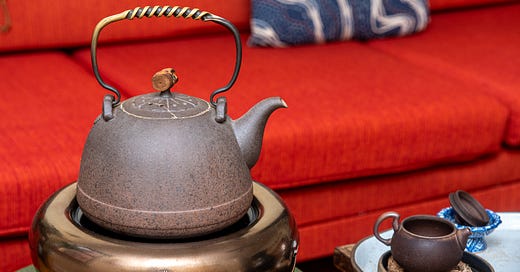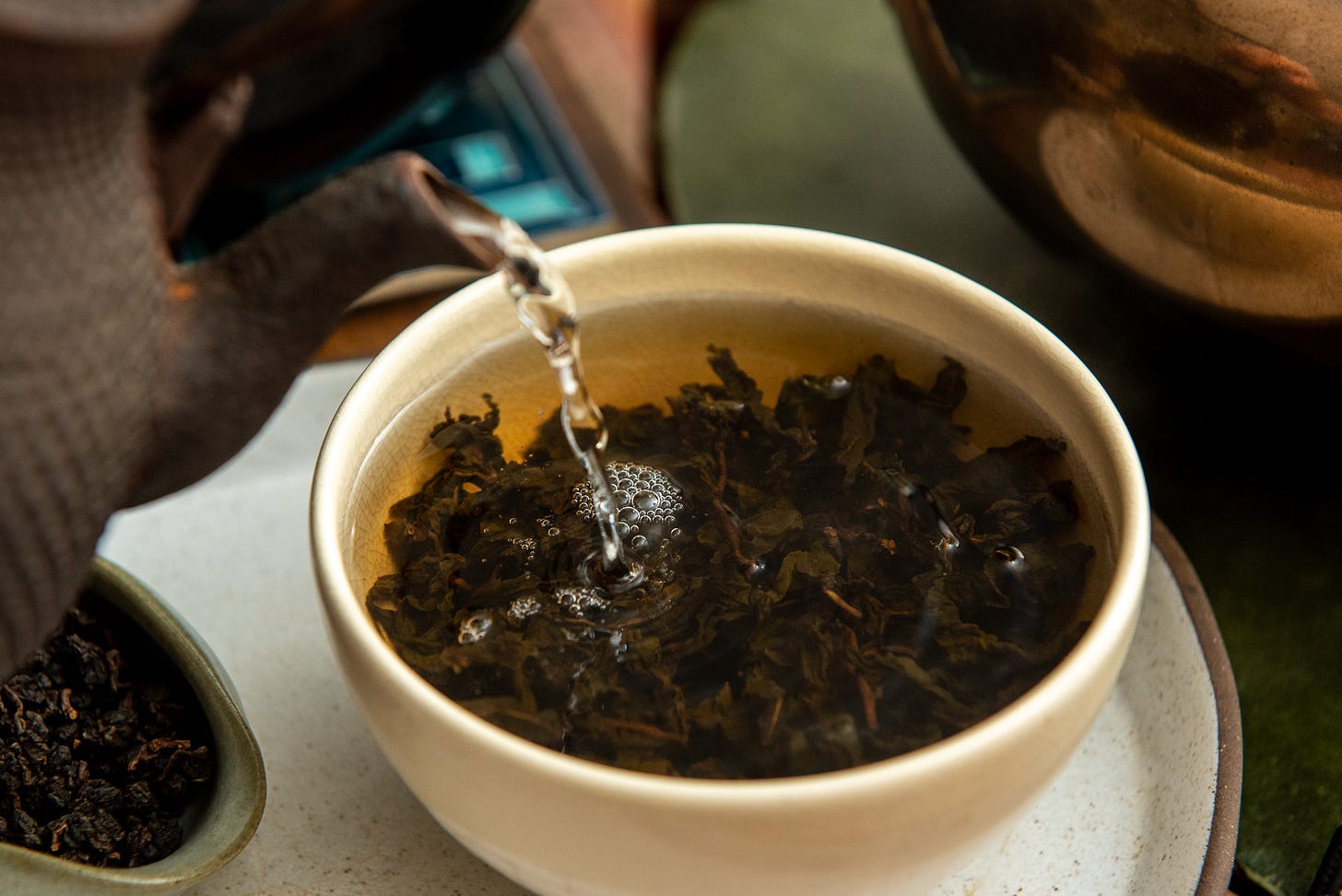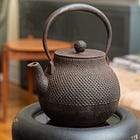The case for a $300 tea stove
Purple tea from Kenya + advancements in Taiwanese water heating technology.
Deep purple
The tea: Kenya purple leaf black tea, sold by Upton Tea Imports. $18.25 for 80g.
There is a mutation in some tea plants that causes young buds and leaves to emerge with a purple hue. This coloring is attributed to high amounts of anthocyanins, the same polyphenols present in blueberries and purple carrots, and marketers of health foods assure us that if only we buy and eat enough of the magic molecules, we’ll all be stick-skinny and live forever. The mutated plants also tend to yield a tea with sweet, fruity flavors and a lusty, spicy-grape vibe familiar to fans of muscadines and scuppernongs. This is what I like about purple tea.
Purple leaf teas occur naturally in the forests of Yunnan and are cultivated as big business in Kenya, the world’s third largest tea producing nation. Since it can be marketed on its alleged health benefits, tea from purple leaf cultivars can be sold at a premium, which is good for farmers and estates that generate income through tea. However it also has to taste good. Purple leaf teas are only as good as their processing, and the state of purple tea processing is a mixed bag. When done well, the tea is lipsmacking and jammy. When made poorly, it’s bitter, astringent, and can stab at your stomach with gut rot.
The source: Purple leaves can be processed into any kind of tea, though in Kenya it’s almost always black tea with a purple-ish tinge. Upton Tea Imports has introduced this batch as part of their 35th anniversary, sourced from the Mount Kenya region. This is exactly the kind of tea I’d get from Upton. They’re one of the earlier promoters of specialty tea culture in the United States, especially for “English” styles like Darjeeling, Ceylon, and Assam, as well as less well known regions like Nepal and Colombia. Fans of big, bold breakfast black teas: bookmark this seller. If you want to try more brews from the Bitaco estate that I covered a couple weeks ago, they have a good selection.
To brew: Take care with this one to avoid bitterness, though if the idea of a strong black tea sweetened with raspberry jam appeals to you, I think you’ll dig it. I use around 6 grams for a 400 milliliter pot (1g/~70ml), steeped for 3 minutes with water just off the boil. I get a poor man’s dancong character from the brew, a kind of dry sweetness that belies surprising fruity depth through multiple steeps. There’s grape, apricot, and plum lurking in the cup, and something incense-like. I’d be curious to taste it blended with other Kenyan cultivars, though then I’d miss out on its pretty purple color.
Why I love this expensive, impractical tea stove from Taiwan
Last week, paid subscribers witnessed my beef with electric kettles. Today I’m covering the more analog brewing setup I use instead.
It started with a rusty kettle in a bookstore.
I was wandering through Bonnie Slotnick, New York City’s venerable cookbook shop, when I saw the tetsubin. It sat on a shelf next to a box of 1950s Jello recipe pamphlets, seemingly ignored by everyone. I don’t think Bonnie, the proprietor, realized what she had. She said it was a teapot made for brewing tea, but a true tetsubin is more particular.
A tetsubin is a Japanese cast iron kettle made for boiling water for tea. Unlike cast iron skillets, tetsubin aren’t seasoned with fat before use, so the water inside is in direct contact with the metal, and can absorb iron particles that alter its flavor and brewing characteristics. It’s a beautiful piece of functional art that can easily become the centerpiece for a tea table. The price for a quality handmade tetsubin starts at several hundred dollars, and ones crafted by masters easily retail for thousands. Bonnie was selling this one for $30.
Keep reading with a 7-day free trial
Subscribe to Leafhopper to keep reading this post and get 7 days of free access to the full post archives.








